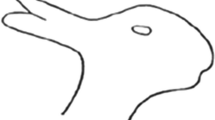Abstract
Three studies are reported that address the often described impoverished creativity in autism. Using the Torrance Creativity Tests, Experiment 1 found that children with autism and Asperger syndrome (AS) showed impairments. Experiment 2 tested two explanations of these results: the executive dysfunction and the imagination deficit hypotheses. Results supported both hypotheses. Children with autism and AS could generate possible novel changes to an object, though they generated fewer of these relative to controls. Furthermore, these were all reality-based, rather than imaginative. Experiment 3 extended this using a test of imaginative fluency. Children with autism and AS generated fewer suggestions involving attribution of animacy to foam shapes, compared to controls, instead generating reality-based suggestions of what the shapes could be. Although this is evidence of executive dysfunction, it does not directly account for why imaginative creativity is more difficult than reality-based creativity.
Similar content being viewed by others
REFERENCES
American Psychiatric Association. (1994). Diagnostic and statistical manual of mental disorders (4th ed.). Washington DC: Author.
Baddeley, A. D. (1990). Human memory: Theory and practice. Hove, UK: Erlbaum.
Baron-Cohen, S. (1987). Autism and symbolic play. British Journal of Developmental Psychology, 5, 139-148.
Baron-Cohen, S, (1995). Mindblindness. Boston: MIT Press/Bradford Books.
Bishop, D. V. M. (1983). Test of reception of grammar (TROG). Available from the Department of Experimental Psychology, Oxford University, South Parks Road, Oxford, UK.
Crutchfield, R. S. (1962). Conformity and creative thinking. In H. E. Gruber, G. Terrell, & M. Wertheimer (Eds.), Contemporay approaches to creative thinking (pp. 102-140). New York: Atherton.
Flowers, J. H., & Garbin, C. P. (1989). Creativity and perception. In S. Daniels-McGhee, S., & G. A. Davis (1994) The imagery-creativity connection, Journal of Creative Behavior, 28(3), 151-176.
Frith, U. (1972) Cognitive mechanisms in autism: Experiments with color and tone sequence production. Journal of Autism and Childhood Schizophrenia, 2, 160-173.
Heausler, N. L., & Thompson, B. (1988). Structure of the Torrance Tests of Creative Thinking. Educational and Psychological Measurement, 48, 463-468.
Jarrold, C., Boucher, J., & Smith, P. K. (1993). Symbolic play in autism: A review. Journal of Autism and Developmental Disorders, 23, 281-307.
Karmiloff-Smith, A. (1989). Constraints on representational change: Evidence from children's drawings. Cognition, 34, 57-83.
Leslie, A. M. (1987). Pretence and representation: The origins of ‘theory of mind’. Psychological Review, 94, 412-426.
Lewis, V., & Boucher, J. (1991). Skill, content and generative strategies in autistic children's drawings. British Journal of Developmental Psychology, 9, 393-416.
Ozonoff, S., Pennington, B. F., & Rogers, S. J. (1991). Executive function deficits in high-functioning autistic individuals: Relationship to theory of mind. Journal of Child Psychology and Psychiatry, 32, 1082-1105.
Russell, J. (1996). Agency. Hillsdale, NJ: Erlbaum.
Rosenthal, A., Demers, S. T., Stilwell, W., Graybeal, S., & Zins, J. (1983). Comparison of interrater reliability on the Torance Tests of Creative Thinking for gifted and non-gifted students. Psychology in the Schools, 20, 35-40.
Rumsey, J., & Hamberger, S. (1988). Neuropsychological findings in high functioning men with infantile autism, residual state. Journal of Clinical and Experimental Neuropsychology, 10, 201-221.
Shallice, T. (1988). From neuropsychology to mental structure. Cambridge, UK: Cambridge University Press.
Scott, F., & Baron-Cohen, S. (1996). Imagining real and unreal things: Evidence of a dissociation in autism. Journal of Cognitive Neuroscience, 8, 400-411.
Scott, F., Baron-Cohen, S., & Leslie, A. (in press). “If pigs could fly”: An examination of imagination and counterfactual realism in autism. British Journal of Developmental Psychology.
Tager-Flusberg, H. (1993). What language reveals about the understanding of minds in children with autism. In S. Baron-Cohen, H. Tager-Flusberg, & D. Cohen (Eds.), Understanding other minds: Perspectives from autism. Oxford, UK: Oxford University Press
Tegano, D. W., & Moran, J. D. (1989). Developmental study of the effect of dimensionality and presentation mode on original thinking of children. Perceptual and Motor Skills, 68, 1275-1281.
Torrance, E. P. (1974). The Torrance Tests of Creative Thinking: Technical-norms manual: Bensenville, IL: Scholastic Testing Services.
Wilson, R. C. (1956). The program for gifted children in the Portland, Oregon, schools. In C. W. Taylor (Ed.), The 1955 University of Utah research conference on the identification of creative scientific talent (pp. 14-22). Salt Lake City: University of Utah Press.
Wing, L., Gould, J., Yeates, S. R., & Brierly, L. M. (1977). Symbolic play in severely mentally retarded and autistic children. Journal of Child Psychology and Psychiatry, 18, 167-178.
World Health Organization. (1994). International classification of diseases (10th ed.). Geneva, Switzerland: Author.
Author information
Authors and Affiliations
Rights and permissions
About this article
Cite this article
Craig, J., Baron-Cohen, S. Creativity and Imagination in Autism and Asperger Syndrome. J Autism Dev Disord 29, 319–326 (1999). https://doi.org/10.1023/A:1022163403479
Issue Date:
DOI: https://doi.org/10.1023/A:1022163403479




